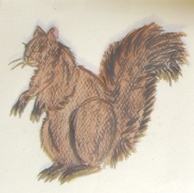IN THIS SECTION: Taking Care
Basics To Start With and Do Everyday
There are a few basics to know and do that will help improve your ability to stand up and do things without getting dizzy, a headache, short of breath, etc. and without fainting. This section goes into detail about each of the actions and provides information about why it is important.
You will probably have to pay attention to these things for a long time, maybe even the rest of your life. Once your symptoms improve, you may only have to go back to this list when there is an "orthostatic stressor" - something that challenges the blood pressure and pulse system and increases symptoms when you stand up (or sit up).
For those of you who are more bed bound, the symptoms of OI will come when you sit up also. Sitting up in bed and sitting up in a chair, especially with your feet down are "orthostatic stressors" for you.

Why You Do These Things: The clinical research has been describing what the changes are in the body with POTS, orthostatic hypotension, and the impact of prolonged bedrest on the body - the heart, the muscles, and the autonomic nervous system. All things that are recommended you do are linked to the problem with the body that cause orthostatic problems.
Basics of Self-Care with OI: This part describes all the things that can be done to decrease orthostatic symptoms and help your body heal. It addresses fluids, salt, raising the head of the bed,, and things you can do to prevent dizziness when you stand up or sit up. There are also sugggestions for how to do everyday activities - like showering, washing your hair, and getting around - without triggering more orthostatic problems.
 Things to watch for: There are some things that trigger orthostatic problems - like heat! The 'Common Triggers' lists the triggers and suggestions for how to manage them.
Things to watch for: There are some things that trigger orthostatic problems - like heat! The 'Common Triggers' lists the triggers and suggestions for how to manage them.
Prescribed & over-the-counter drugs and herbs afffect blood pressure (BP) & pulse. They can create 'orthostatic side effects' - they can trigger orthostatic problems. Sometimes, you still need the drugs - but it helps to know about the possibilities & use the lowest dose that works.
They can increase BP &/or pulse. Sometimes, they are used to treat orthostatic symptoms. It's good to know that they have this effect - so if the blood pressure goes up, you have an idea what is causing it.
Manage Temperature: People with orthostatic conditions can be challenged by both heat and cold outside temperatures. The sense of body temperature - and actual temperature of the skin - can be cold or hot. There are a few things that can help you adjust your body temperature so it is more comfortable. These things can be really helpful with physical activity.
 Handling Flare-Ups: Like everything in life, sometimes, things get a little off balance and you get more orthostatic symptoms. There are 3 things to handling them so they are more like a "bump in the road" and not a major roadblock or detour.
Handling Flare-Ups: Like everything in life, sometimes, things get a little off balance and you get more orthostatic symptoms. There are 3 things to handling them so they are more like a "bump in the road" and not a major roadblock or detour.
1 - Doing a self evaluation to decide if you need to be seen by a physician/ER to decide what is going on and/or to get things back on track quickly.
2 - Review and intensify fluids and salts to get things back on track.
3 - Figure out if something triggered this change. If you find one - then go over things to get it settled down.
 Managing Bed Rest: Now that we know how important bed rest is to the body and orthostatic symptoms, it becomes even more important to know how to handle it so it doesn't create more problems. There are 2 issues - one is managing bed rest when you need to rest - because of illness or injury.
Managing Bed Rest: Now that we know how important bed rest is to the body and orthostatic symptoms, it becomes even more important to know how to handle it so it doesn't create more problems. There are 2 issues - one is managing bed rest when you need to rest - because of illness or injury.
There is an even bigger issue for those who are bed-bound or spend most of their day in bed. Creating a recovery plan that helps the body heal & recognize standing up as normal is really important. Unfortunately, this is an area that needs more attention. We will be developing this more because it is very important.
Author: Kay E. Jewell, MD
Page Last Updated: August 28, 2012


